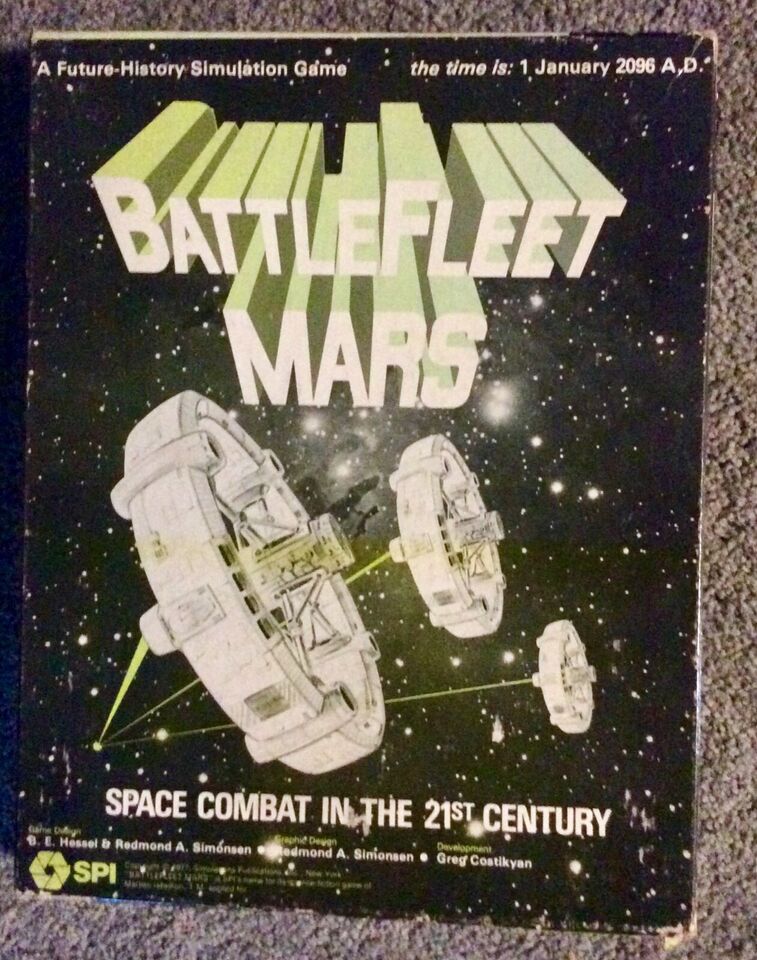BattleFleet Mars: Space Combat in the 21st Century (1977)
BattleFleet Mars
BattleFleet Mars is a science fiction board wargame published by Simulations Publications, Inc. (SPI) in 1977. The game simulates combat in the inner solar system, with one player controlling spaceships owned by rich Earth corporations that have made vast amounts of money from mining in the asteroid belt, and the other player controlling spaceships used by miners on Mars and on asteroids who are seeking independence from Terran control. The planets and asteroids on the map change position as they orbit around the sun, resulting in different distances between planets at various points during the game. The game was designed by Brad Hessel and Redmond A. Simonsen, and Simonsen also supplied the graphics and cover art.
Why is BattleFleet Mars Popular?
BattleFleet Mars was a bestseller for six months after its publication in 1977. The game is significant for its unique theme and Gameplay Mechanics of BattleFleet Mars, which allow players to simulate space combat in the inner solar system.
Game Components of BattleFleet Mars: Space Combat in the 21st Century
How To Setup BattleFleet Mars: Space Combat in the 21st Century
Setup involves laying out the map of the inner Solar System, which includes the dynamic positions of planets and asteroids as they orbit the Sun. Players distribute their spaceships and other game components according to the rules. The game does not use a standard hex grid; instead, distances are measured, and a time for arrival is applied.
Gameplay Mechanics and Game Objective
Player Experience
Playing **BattleFleet Mars** can be a complex and immersive experience. The game’s unique mechanics, such as the dynamic solar system map and the morale-based victory conditions, set it apart from conventional wargames. However, the complexity can also lead to prolonged gameplay and potential boredom.
Pros
Cons
Personal Thoughts on BattleFleet Mars: Space Combat in the 21st Century
**BattleFleet Mars** is for enthusiasts of science fiction and wargaming who are looking for a challenging and unique experience. It is particularly suited for those interested in space combat and orbital mechanics. However, it may not be the best fit for players seeking a straightforward or quick game, as its complexity and depth can make it time-consuming and demanding. Despite its mixed reception, it remains a notable game in the genre for its innovative approach to space combat simulation.
We are supported by our audience. When you purchase through links on our site, we may earn an affiliate commission, at no extra cost for you. Learn more.

